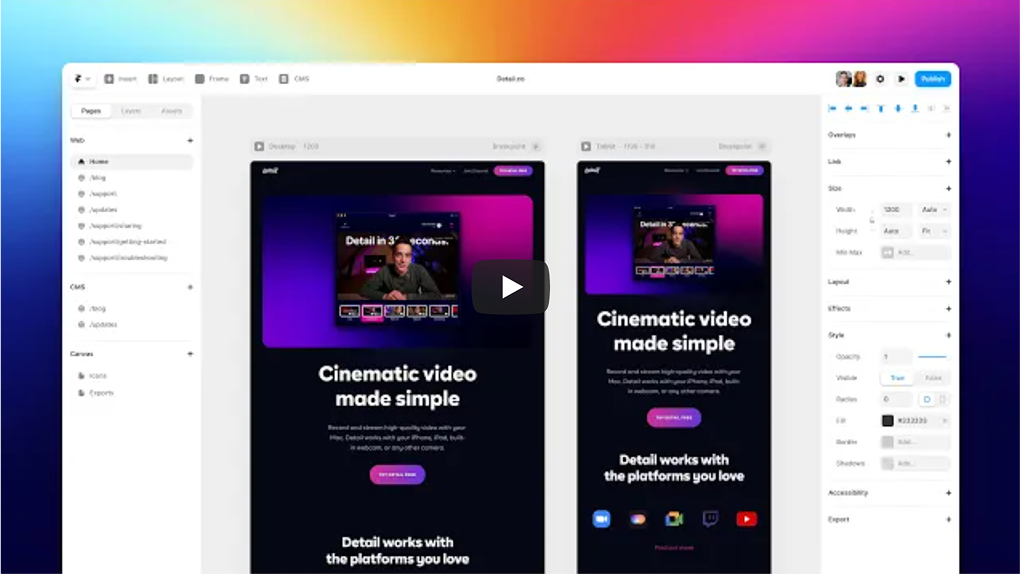
Trust and Growth in the Era of Quiet Quitting
February 8, 2023

The year 2022 was all about corporate buzzwords. Recently, SHRM called these buzzwords nothing but “employee job contingency plans”. However, the rising trends in the world of work vis-a-vis people and culture are hard to look past for employers. Moreover, we saw the market turn on its head as a lot of employers spent the last year struggling with employee retention, while also grappling with the impending recession that led to mass layoffs. Nonetheless, of all of the trends out there, one struck strong and continues to be at the center of discussions – Quiet Quitting.
What is quiet quitting?
Recently, we spoke to Evelyn Kwek, Managing Director of Great Place to Work ASEAN & ANZ. She in fact reiterated the virality of the term Quiet Quitting. In 2022, a 17 second TikTok video discussing the idea of “Quiet Quitting” went viral. This video, along with many news outlets discussing the concept of Quiet Quitting, gave the idea a lot of legitimacy.
LinkedIn described Quiet Quitting as “rejecting the notion that work has to take over one’s life and that employees should go above and beyond what their job descriptions entail.”
The idea was that people should not “lean in” to employers who don’t seem to care. It was popular because it resonated with people who were feeling overworked, especially after the pandemic blurred the lines between personal and work lives.
This trend coincided with another big event in 2022. At the start of 2022, the economy was at an all-time high, but due to layoffs, companies were in a sticky place. Gartner elaborated on this by introducing “Quiet Hiring”. Another buzzword that caught the world of work in a spin. Amidst this shift, it became critical for companies to play a very intentional role to engage, treat and bring out the best from their employees, especially in times of recession.
To better understand how to improve employee engagement, Great Place to Work released a study on Quiet Quitting and found that organizations certified as “best” had an overall higher average of motivated employees and their leaders tended to have the behaviors and abilities to build better relationships with them. To learn more, Great Place to Work deployed their proprietary survey, the Trust Index Survey, to better understand employee experience in the workplace. The survey had a similar methodology to Zenger and Folkman. After analyzing the data, Great Place to Work concluded that Quiet Quitting is less about an employee’s willingness to work harder or more creatively and more so about a manager’s ability to build a relationship with their employees. The results showed that over nine in 10 of the employees working in one of the best companies said that they look forward to coming to work and were willing to give extra to get the job done.
Breaking the data down into power skills
This data is critical. At Fundamento, we sat with this data to get to the core of what impacts these findings. The study concluded that leaders who have the least percentage of team members who are Quiet Quitting are the ones that are performance-driven but also have a focus on building relationships. The number one behavior that drives this is trust. Great Place to Work found that there are three critical behaviors that leaders can demonstrate to build trust: an ability to build positive relationships with employees, consistency in words and deeds, and competence in their field of work.
In order to build trust, Fundamento’s team of I/O psychologists derived that these power skills are critical to develop in teams:
- Transparency
- Teamwork & Collaboration
- Developing Others
Let’s break this down further.
Organizations spend a lot of time focusing on how to improve their baseline and enhance productivity. The most common questions around this are:
- How do I make sure that I get the best out of my people?
- How do I drive productivity?
- How do I use technology to automate, to streamline?
- How do I drive online collaboration amongst the team?
One of the most effective ways to resolve these doubts is to implement a skills-based system in organization. If the above power skills are developed in managers and leaders, a large part of the problem leading to the phenomenon of quiet quitting can be dealt with.
Transparency
The ability to maintain honesty, openness, and integrity about emotions, beliefs, and ethical principles.
For any leader to build a culture of trust within the organization, Transparency is a critical skill. This is how it can potentially manifest in a leadership role:
- Set realistic performance expectations to give a clear sense of direction
- Create communication channels for better and timely exchange of information
- Keep the team together through regular feedback on goal achievement
Teamwork & Collaboration
The ability to respectfully work with others to achieve a shared goal, build group synergy and enthusiastic participation.
Ensuring that the team is collaborating in a productive way is essential to building a culture of high trust. This works in two ways. One from a standpoint of deep work and efficiency and the other from the lens of building a culture of knowledge sharing and team productivity. This is how it manifests in a leadership role:
- Understands and aligns team members basis their complementary skills and expertise to foster collaboration and use resources in the most efficient manner
- Promotes group morale and productivity by being clear, objective and focused.
- Involves others in decisions and plans that affect them to give them an opportunity to share ideas that help them achieve a common goal for the organization
Developing Others
The ability to determine strengths and areas requiring improvement in others and mentoring or coaching them towards enhancing their abilities.
It’s crucial for leaders to invest time and energy on their team in order to trickle behavior and culture down the line. This manifests in the role in multiple ways:
- Effectively transfers acquired knowledge and expertise, and imparts important information to others to increase the overall efficiency and productivity of the organization
- Gives feedback that is constructive and actionable based on facts and behavioral patterns, to help the team understand what they’re doing right and what they should improve on
- Tracks team performance effectively by ensuring the strategy and vision of the organization is translated into timely execution for maximum output
There has been an increased focus on hybrid workforce and productivity in the last two years. This shift is due to the ever-changing and unpredictable workforce environment. Organizations are reconsidering their employees’ optimal working arrangements, which have shifted to a hybrid model. In this model, both remote and in-person employees must find a sense of belonging, connection and collaboration. Discussion has also shifted to how companies can build agile teams and drive productivity. Power skills play a big role in initiating this change effectively.
Quiet Quitting and other trends have also led to organizations shifting focus on culture, leadership development and upskilling, especially in developing countries. Companies are making a conscious effort to invest in their people and help them stay relevant. Evelyn Kwek said, “In countries with a shrinking workforce such as Singapore, businesses are looking to get the most out of fewer workers. As immigration has become a politically sensitive topic, the need to get more done with less becomes even more urgent. Companies need to focus on ways of working as well as benefits, allowing for mental health resources and days off, but also addressing the underlying issues of toxic behavior, workloads, and productivity.”
As we move forward, Kwek believes that we are going to see a lot of organizations take charge of employee well-being and focus on increasing productivity by facilitating growth, trust and relationships in organizations.
Do listen to our latest episode of Skill Flex with Evelyn Kwek, releasing on Thursday, 9th February, 2023, exclusively on Spotify.



